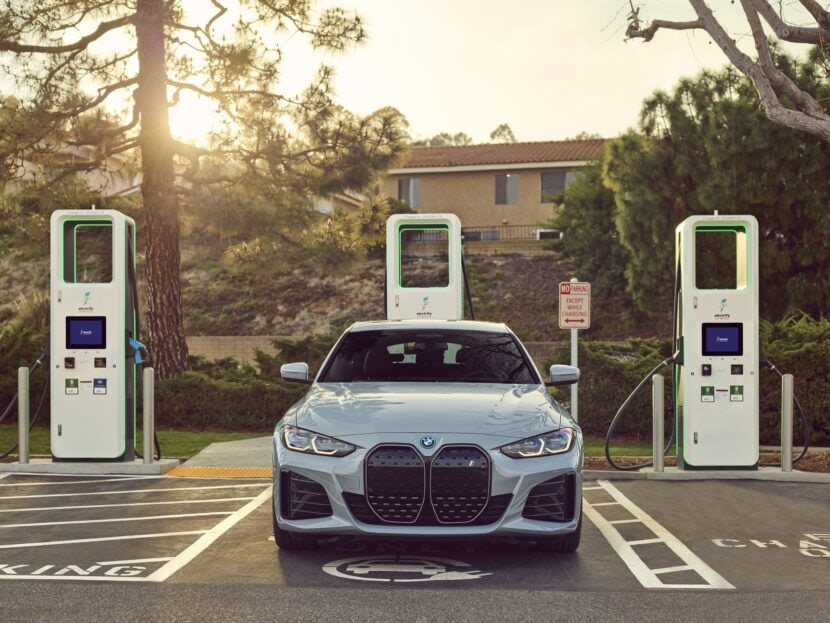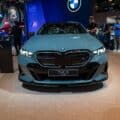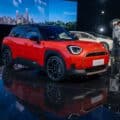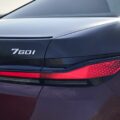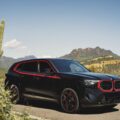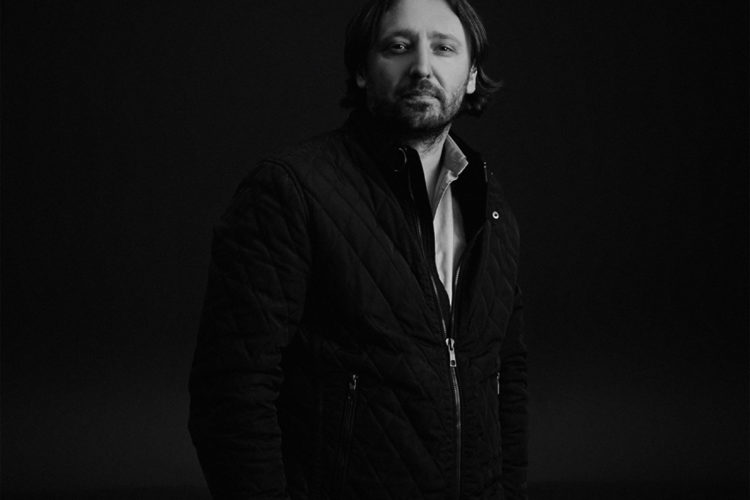It’s Climate Week in New York, but Dr. Thomas Becker, BMW’s Head of Sustainability and Mobility, couldn’t make it. Ironically enough, given the subject matter, an airplane’s engine failure was to blame. But he still was able to join digitally. Taking questions from journalists, we got a glimpse of what the top green man at BMW thinks about BMW’s dedication to sustainability, the future of hydrogen, and more.
From the i3 to Neue Klasse: BMW’s Strategy
“If you look at the Neue Klasse,” Becker begins, “this is a car – which very much like the i3 – has been really designed from the very outset not only to have an electric drive train, but to have an overall CO2 footprint which is way lower than what we have been making.” He adds that increased focus on sustainability in the supply chain is a huge step forward. And, it wasn’t necessarily something the i3 prioritized as strongly. “It’s another step beyond the very specific architecture chosen for the i3 into broadening the approach,” he says. Becker believes that everything you see today was built upon lessons learned since 2012 and earlier.
Another aspect of BMW’s strategy is, well, “uncertainty,” according to Becker. “Things today do not look as we thought,” Beckers says regarding BMW’s continued exploration of alternative fuels like hydrogen. He continues: “There are many predictions about how the world looks in 2040. All of them focusing on the question, ‘when will you have sold the last combustion engine?'” He (correctly) points out that we’re talking about the last 20% of the market while EV penetration is still below the first 20% as an industry. “We take things one step after the other. But very clearly, I think, we demonstrate that we deliver.”
Barriers to Sustainability and Reducing CO2 Across the Lineup
“You always have a combination of two factors. One is an infrastructure for public charging,” Becker starts. When asked about the biggest barriers to sustainability, it’s never just one thing. “The other one is perceived good business case. Good total cost of ownership,” he says as he points out the heavily incentivized purchases in fast-moving markets like the US via tax rebates.
It’s clear that Neue Klasse is focused on reducing CO2 throughout the supply chain. But what about CLAR and front-wheel drive UKL platforms? They’ll remain in production as Neue Klasse begins, after all. “We approach all the big energy-intensive materials,” Becker says. It’s not limited to the Neue Klasse; “We’ll keep trying – wherever the contractual situations allow – to improve the footprint of our portfolio.”
Accelerating Innovation By Cutting Out CO2
When BMW began reaching out to suppliers three years ago in search of sustainable options, Becker noticed “tremendous acceleration.” Existing and new suppliers have taken baby steps with BMW to solidify a more sustainable supply chain. “You do not do this in a one off negotiation,” says Becker, “but discuss trajectories and next steps and steps that follow. It’s not about jumping into one perfect solution.” He uses an example of BMW’s ramp-up of hydrogen vehicles – a slow burn, not a 100% full-court press. Same with the materials inside a BMW. Replacing leather with assistance from the textile industry – primarily with plant-based products – can cut between 100 and 300 kg of emissions per car.
Recommitting to Hydrogen
“We will not put all our eggs into one basket,” Becker starts. “We see hydrogen, from a purely technical view, as a good option.” Becker claims that BMW is strongly petitioning policymakers to commit to a hydrogen-focused infrastructure. They’ll commit when they believe one alternative fuel wins out. When it comes to synthetic fuels, Becker isn’t sold: ” I think the potential of that approach is limited,” he says. While he hasn’t ruled it out completely – “We should not discuss this always as ‘you either believe in this, then you can’t do that.’ Or, ‘you have to believe in this, and this means let’s not touch that one.’ Let’s look at all pieces of the equation and not confuse the means and the objectives that that we want to achieve.”
Urban-X At New Lab
The day before our interview with Dr. Becker, MINI hosted a panel at their Urban-X tech incubator in Brooklyn, New York. Introduced in 2016, MINI established URBAN-X to back companies striving for innovative solutions in sustainable urban development. Since its inception, URBAN-X has invested in more than 80 startups worldwide. As of now, four of URBAN-X’s portfolio companies have been acquired, and an impressive 88% of these firms have successfully secured their subsequent rounds of capital.
The MINI tech incubator is led by Sarah Schappert, Director of URBAN-X Europe. Schappert moderated a panel with speakers from different industries: Tiasia O’Brien, CEO co:census, Alex Esposito, CEO Circuit, Alex Bilgeri, VP of Corporate Communications HR, Production, Purchasing and Sustainability BMW, Adam Lubinsky and Principal WXY. The main topic: innovation in the transportation segment and mobility of the future.
According to Bilgeri, BMW currently sees a unique use case in China. “90 minutes on average is the time spent in the car in the China,” Bilgeri says. It’s the extended living room [for many Chinese customers].” Essentially, the car gets a different role than being an instrument of transportation. “The role of a car is changing, they can get some privacy in the car,” added Bilgeri.
But how are our kids seeing the future of cars and mobility? “I would like to spend time with my children because I cherish the opportunity to listen to them and connect with their interests, Bilgeri said. “It’s evident that they have a strong inclination towards mobility and a desire to be part of the global community. Additionally, communicating with teenagers has revealed that they are forward-looking; they don’t want to regress to a previous era but are intrigued by how things could evolve.”
MINI Countryman Electric Makes U.S. Debut
The inaugural arrival of the MINI Countryman electric has taken place in New York City this week. The U25 variant of the Countryman also made its debut at the Climate Week NYC. This marks the Countryman’s first-ever appearance in the United States, following its global premiere just earlier this month at the IAA Mobility event in Munich. MINI of North America has laid out its plan to introduce the electric Countryman to the market in the autumn of 2024, with the SE variant leading the way.
The new MINI Countryman (U25) draws design inspiration from the electric Cooper three-door hatch while preserving its distinctive rugged aesthetic. This rugged character is accentuated by elements such as front and rear skid plates and roof rails. Step inside the 2024 MINI Countryman, and you’ll find an interior design that bears a striking resemblance to the new MINI hatchback. The centerpiece of the cabin is a prominent 9.4-inch OLED circular display elegantly integrated into the curved dashboard, providing easy access to a wide range of functions. This cabin marks a significant departure from traditional automotive interiors, embracing a minimalist philosophy by eliminating the conventional driver’s display and most of the traditional controls.
More crossover than ever before, the new MINI Countryman is poised to become a major seller for the MINI brand in North America.
Driving the BMW iX5 Hydrogen
BMW has deployed five iX5 Hydrogen test vehicles across the United States, with two of them making a special appearance in New York City during Climate Week. Following our initial experience with the groundbreaking iX5 FCEV in Arjeplog, Sweden in 2022, and another encounter a year later in Antwerp, Belgium, we seized the opportunity to take the iX5 for a brief spin through the streets of Brooklyn.
Of course, these are technically experimental prototypes, which means they can’t be sold. Instead, the vehicles will be handed over temporarily to members of the media as well as stakeholders to test the technology in real-world driving conditions. A hydrogen-fueled BMW production model you’ll be able to buy is coming before the end of the decade, according to a statement made by chairman Oliver Zipse earlier this year.
“We think hydrogen is a missing link, which is not so obvious,” Zipse told us in an interview. While he’s certain that electric vehicles will catch on – even swallowing up to 60% of market share in some countries – there is more to the story. The scarcity and pricing of raw materials will become worrisome. Charging infrastructure will be challenging and still limiting in rural areas, despite millions of battery electric vehicles on the road. The BMW boss thinks we’ll start seeing ramifications as early as 2027 or 2028. That’s where hydrogen comes in.
You can see our video review below:





